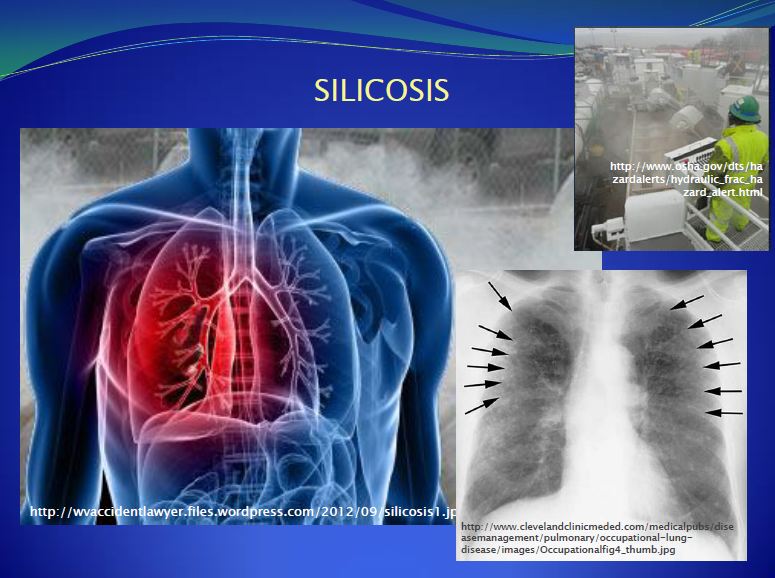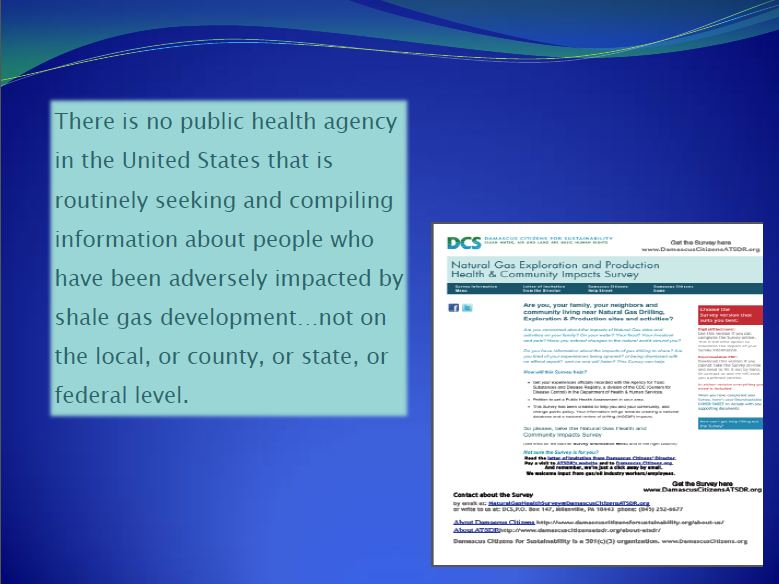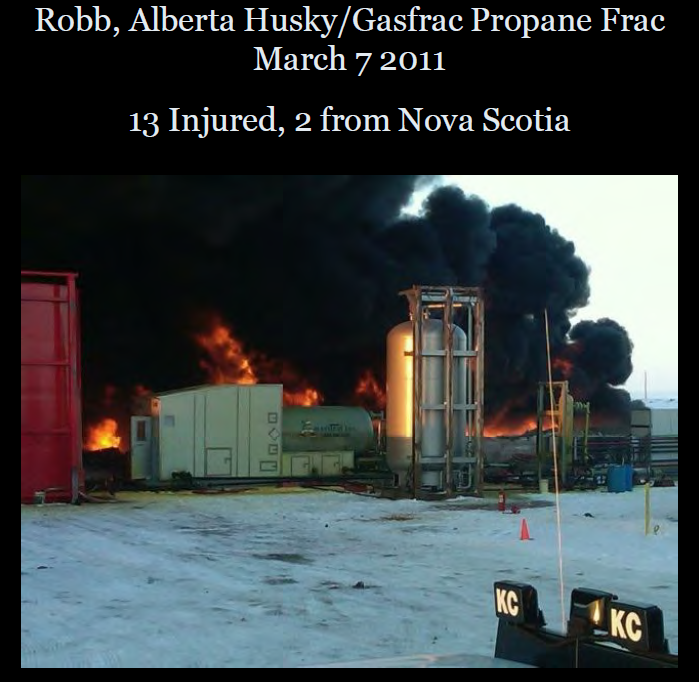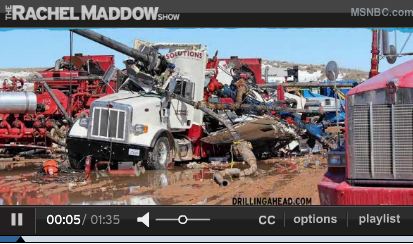Offshore Fracking Injuries by Jeffrey Raizner and Doyle Raizner, LLP, September 13, 2013
Although offshore hydraulic fracturing, or fracking, may be receiving less exposure and scrutiny than its land counterpart – the California Coastal Commission was not even aware that fracking occurred in the Santa Barbara Channel until recently – offshore fracking is just as dangerous, and maybe even more so.
Offshore work is some of the most dangerous in the world, and offshore fracking, which exposes workers to steadily increasing on-the-job injuries, explosions, oil and chemical spills, and contact with toxic chemicals, is posing unique risks not only for workers, but for people in nearby communities as well.
Personal Injuries
According to the Institute for Southern Studies, approximately 435,000 workers are employed by the U.S. oil and gas extraction industry, with half working for well services companies that conduct hydraulic fracking. Fracking workers are more than seven times more likely to die on the job than other types of workers. The Institute also notes oil and gas field workers work an average 20 hour shift
Due to the inherently dangerous nature of fracking, these workers often face crippling injuries to their neck, back, knee, and shoulders, and are sometimes left paralyzed or die as a result of explosions, seismic activity or sinkholes that open with little or no warning. Some of the safety hazards that fracking workers regularly encounter include fatigue from working long shifts, being struck by moving equipment and high-pressure lines, and working in extreme temperatures and confined spaces. Doyle Raizner currently has a case (Perio v. Titan Maritime, LLC and T&T Marine Salvage, Inc.) where the worker’s leg was caught in a cable resulting in him being thrown 30 feet in the air and dropped on the beach. Accidents in the oil and gas industry can be catastrophic and fatal. Fracking makes an already dangerous job more dangerous due to the increased risk of seismic activity and explosions, as well as the long hours that often result in worker fatigue. …
Chemical and Oil Spills
Fracking fluids, which can comprise hundreds of chemicals, are exempted from the nation’s clean water laws, allowing companies to flush chemicals into the ocean, and oil industry experts estimate that at least half of the chemical-laced water remains in the environment after a fracking operation. Surprisingly, the exact chemical makeup of the chemicals used in fracking is not public knowledge, since disclosure of these fluids is protected as proprietary trade secrets. Federal regulators are currently allowing companies to release fracking fluid into the sea without requiring them to file a separate statement or environmental impact report analyzing the possible effects, an exemption that was affirmed earlier this year by the U.S. Environmental Protection Agency, according to an August 3, 2013 report in the Huffington Post. …
Toxic Exposure
During the fracking process, silica sand is mixed with water and other chemicals and pumped into shale formations at high pressure to break up the rock and stimulate well production. Both onshore and offshore fracking can use hundreds of thousands of pounds of silica/sand, which creates airborne dust at the fracking site, and the National Institute of Occupational Safety and Health (NIOSH) has found that fracking sites were exposed to dust containing high levels of respirable crystalline silica.
Hydraulic fracking sand contains up to 99 percent silica. According to the Occupational Safety and Health Administration (OSHA), crystalline silica particles present in the body become trapped, causing lung inflammation and reducing the lungs’ ability to take in oxygen. Even exposure to small quantities of crystalline silica over time can lead to cancer, bronchitis, or silicosis. In a Hazard Alert issued in June 2012 by OSHA and NIOSH, seven areas of exposure to silica for fracking workers were identified:
- Dust ejected from thief hatches (access ports) on top of the sand movers during refilling operations while the machines are running (hot loading)
- Dust ejected and pulsed through open side fill ports on the sand movers during refilling operation
- Dust generated by on-site vehicle traffic
- Dust released from the transfer belt under the sand movers
- Dust created as sand drops into, or is agitated in, the blender hopper and on transfer belts
- Dust released from operations of transfer belts between the sand mover and the blender
- Dust released from the top of the end of the sand transfer belt (dragon’s tail) on sand movers
Because the fracking process is essentially the same for both onshore and offshore operations, all fracking workers face the same types of exposure. …
Fracking’s dangers for workers by the Institute for Southern Studies by Oil and Gas Monitor, May 2012
Number of workers employed by the U.S. oil and gas extraction industry: 435,000
Percent of those workers employed by well servicing companies, including those that conduct hydraulic fracturing or “fracking” for natural gas: almost 50
Occupational deaths in the oil and gas extraction industry from 2003 to 2009 per 100,000 workers: 27.5
Number of times that rate exceeds the fatality rate for all U.S. workers: more than 7
Percent by which fatalities among oil and gas workers rose from 2003 to 2005, as the drilling boom accelerated: 15
Rank of highway crashes among the top causes of fatalities in the industry: 1
Number of oil and gas workers killed in highway crashes over the past decade: more than 300
Of the 648 oil and gas field worker deaths from 2003 to 2008 alone, portion that were due to highway crashes: 1/3
Portion of workplace fatalities accounted for by highway crashes across all industries in 2010:1/5
Length of shifts in hours that oil and gas field workers are routinely pressured into working by employers who cite longstanding regulatory exemptions enjoyed by the industry: 20
The legal limit of workshifts for most commercial truckers, in hours: 14
Of the 2,200 oil and gas industry trucks inspected from 2009 to February 2012 by state police in Pennsylvania, the epicenter of the fracking boom, percent that were in such poor condition they had to be taken off the road: 40
Number of fracking sites where the National Institute for Occupational Safety and Health (NIOSH) recently collected air samples to evaluate worker exposure to crystalline silica, which is present in the “frac sand” used in the natural gas extraction process and causes silicosis (shown in X-ray above), an incurable lung disease: 11
Percent of the tested fracking sites where workers’ exposure to respirable crystalline silica exceed occupational health limits: 100
Percent of crystalline silica that typically makes up “frac sand”: 100
Pounds of sand typically used to frack a single well: up to 4 million
Percent of the 116 air samples collected that exceeded the NIOSH recommended exposure limit by a factor of 10 or more, rendering the use of half-mask air-purifying respirators insufficiently protective: 31
Date on which two workers were hurt in an explosion at a fracking tank site in Texas: 5/16/2012
Number of months before the explosion that the site’s owner, Vann Energy Services LLC, was cited for 17 serious health and safety violations: 3
Date on which the AFL-CIO wrote a letter to federal labor officials expressing concern about serious safety and health risks faced by workers in the fracking industry and calling for better protections: 5/22/2012
Percent change in the number of drilling rigs from 2010 to 2011: +22
Percent change in the number of inspections at those work sites: -12 [Emphasis added]
[Refer also to:
For Occupational Safety and Health Research and Practice in the U.S. Oil and Gas Extraction Industry by NATIONAL OCCUPATIONAL RESEARCH AGENDA (NORA), October 2011
During 2003-2008, 648 oil and gas extraction workers were fatally injured on the job, resulting in an occupational fatality rate of 29.1 deaths per 100,000 workers – eight times higher than the rate for all U.S. workers.
Workplace Deaths Drop – But not in the Oil Industry
Alberta drastically under-reports workplace injuries

Larysa Dyrszka: “[Silicosis] is a preventable disease but incurable once you get it.”

Slides above by Larysa Dyrszka MD, September 2013
Fracking giant Halliburton nixes North Carolina’s chemical disclosure rule
Prof says fracking has sordid track record
Maddow shows incredible photos from explosive Texas ‘fracking’ accident
Two Children Dead After Water Truck Overturns on Sedan in Harrison County
Man dies after explosion “This is a dangerous business….”
Five workers injured in drilling accident in Frierson
Lack of adequate procedures cause of Suncor rig blowout near Hudson’ Hope, Alberta
Worker hurt in northern Alberta explosion
Energy lobbyist, Ex Encana/Cenovus VP Gerard Protti, appointed as Alberta’s new top energy regulator
Accident at Encana well in Colorado kills 1, injuries 3
Jury awards $4.1M to injured Rifle rig worker, Tesco, subcontractor for Encana, expected to appeal
Encana Reaches Compensation Deal for Sour Gas Leak
$250000 in community safety projects following Encana deadly sour gas leak
Failure Investigation Report: Failure of Piping at EnCana Deep Frac’d Swan Wellsite A5-7-77-14 L W6M
EnCana Corporation facing criminal charges
Drilling regulators pull double duty as industry promoters
Fire at gas well near Gleichen Alberta injures worker
Cause of 1985 Ross Store Explosion and Other Gas Ventings

Slide from Ernst Presentation UK / Ireland 2013 Frac Speaking Tour
Oil workers suffer burns in blast by Canada’s Occupational Health and Safety Magazine, March 2011

